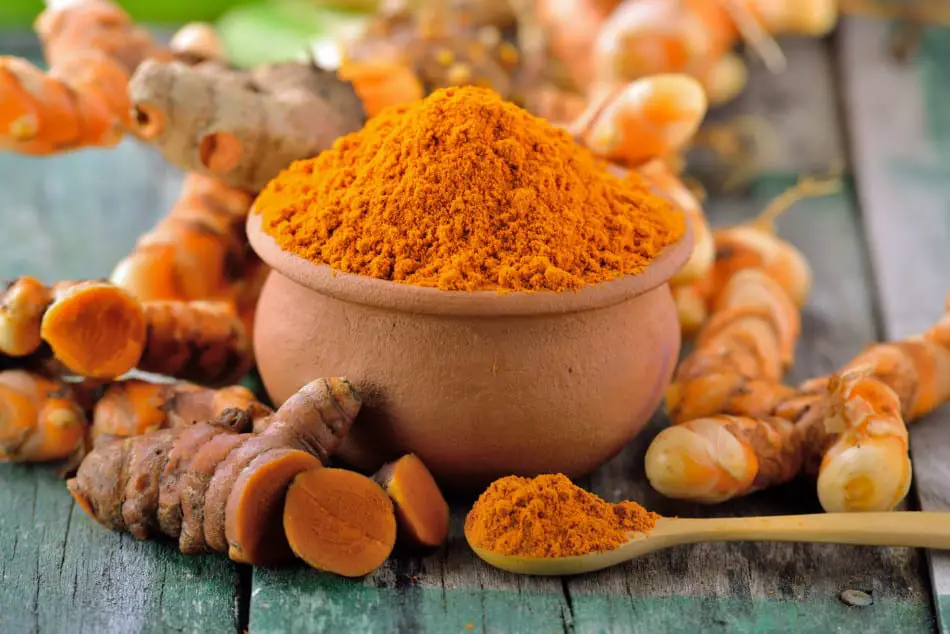
As we all know, the vast majority of vertical farms choose to grow leafy greens. Still, many people wonder if it’s also possible to grow other types of crops vertically under a controlled environment. Is turmeric a good choice for your vertical garden? Let’s find out!
Turmeric can be grown in diverse tropical conditions and with different soil types, making it a good candidate for vertical farming with hydroponic setups. It usually uses stacked layers with soilless media like cocopeat, perlite, or rock wool to stabilize the plant.
Growing turmeric in vertical farms has become a game-changer in various parts of the world. This article will look into this plant more closely and describe how suitable it is for vertical farming.
Can Turmeric Be Grown in Vertical Farm?
Turmeric is a tropical heat-loving perennial herb that can be successfully grown in vertical farms using the hydroponics method. Turmeric is grown in stacked layers of soilless media in a warm, humid controlled environment.
Such a method is an ideal alternative for most rhizomes such as turmeric that are susceptible to most soilborne pathogens and nematodes that greatly influence yields.
Turmeric plant produces multiple rhizomes that require room for growth due to their horizontal growth habit. Because there is no soil to support and stabilize these rhizomes, they need some media alternative such as perlite or rock wool.
In large-scale production, the media-perlite is put in a plastic bag that is then drip-irrigated with a nutrient solution in a method called drip hydroponics.
Characteristics of turmeric plant: What makes it suitable for vertical farming?
- Turmeric has a short stem with simple oblong leaves.
- The rhizomes grow horizontally, and this allows for faster branching.
- Both the shoots and rhizomes are edible.
Best Conditions for Growing Turmeric in Vertical Farm
Lights
When choosing a lighting system, it is important to remember that the light must fall within the Photosynthetically active radiation (PAR spectrum) of 400-700nm. This is what determines the intensity of light within a given range. Turmeric requires a Day Light Interval /photoperiod of (≥12 hours) for continuous growth to prevent plants from getting into dormancy and is gradually adjusted to (≤ 11 hours) to induce rhizome production. Various companies are offering customized LED lights that are dependent on the type of structure you intend to put up. It is advisable to seek an expert opinion on the best solution for you.
Temperature
Heat-loving plants like turmeric prefer warm temperatures of between 80-90 °F(26-32 °C). Higher temperatures tend to favor faster growth, while lower temperatures slow growth.
Humidity
Turmeric thrives well in a humid environment of 70-90%. It is advisable to ensure high levels of humidity are maintained at all times.
Nutrients
Nutrient solutions ideal for a hydroponics setup must contain optimal levels of pH, salinity, the conductivity of nutrients (EC), and aeration. General hydroponics nutrient solutions consist of six essential nutrients: N, P, S, K, Ca, and Mg, which plants take up in the form of mutual ratios of anions and cations. The recommended EC range is 2.2-2.6. Maintaining this range ensures one can accurately measure nutrient levels in the solution. The pH range should also be kept at 5.7-5.8 for nutrient availability and uptake efficiency.
Shop The Farmstand – Self-Watering, Self-Fertilizing Solution for an Easy to Grow Harvest

Time to Maturity and Yields of Hydroponic Turmeric
It is important to begin by stating that the time of harvesting turmeric is dependent on its end-use. Under ideal conditions, hydroponically grown turmeric produces rhizomes that can be readily harvested as early as six months, with the main crop yield taking 8-9 months from planting.
This is greatly determined by the type of variety grown. Early varieties (planted early in the year) mature in 7 months, while intermediate ones take 8 months, and the late varieties last 9 months.
In some instances, 5 months after planting is ideal for harvesting turmeric rhizomes that will be sold as fresh vegetables containing a few segments of leaves. They are usually low in fiber content and pungency levels.
Those harvested at 5-7 months are sold in retail and are used as preservatives. Rhizomes that take a longer maturity time are a good choice for drying and extraction of essential oils.
You can easily determine the maturity and if they are ready for harvesting since the leaves and stem will turn brown in color and dry out progressively. Being a polyhouse set up, they can be harvested by handpicking or using a spade by carefully lifting the clumps and cutting the stems one inch above the rhizomes.
Turmeric plants spaced 12-14 inches apart promise faster maturity provided lighting is sufficient during the growth period.
The expected yields from this method heavily rely on proper balance and maintenance of the turmeric growing conditions. Expected yields also are dependent on the variety used. High-yielding hybrid varieties are what you should consider. Polyhouse cultivation has been reported to increase yield from about 5 to 10 times.
A S AGRI AND AQUA LLP company estimates a total of 100 Tons production in 1 acre. In addition, the company reports that it has successfully harvested 800,000- 1,000,000kg wet turmeric, unlike the conventional ways that produce equivalents of 10,000kg per acre.
Pest Control for Hydroponic Turmeric
Scouting for the presence of pests or diseases in such a system is essential. Integrated pest management strategies such as insect traps or parasites may also be useful in detecting any available pests for action to be taken against the further spread from the point of contact. This system encourages high levels of sanitation; therefore, the chances of pests and disease introduction are minimized.
Some of the common pests that may be active during propagation are fungus gnats. Mature plants may be prone to Shoot borers, mites, thrips, and whiteflies attacks that may be controlled by fortnightly application of 0.5-1.0% neem oil (organic).

If you run into issues with pests, I highly advise you to consult an expert on the best control measures to take. The use of clean sterilized inert media and pest-free rhizomes plays an important role in pests elimination and saves time and resources that may be used for control. Prevention is the best remedy, but if pests and diseases occur, control measures should be effective.
Companies Growing Turmeric in Vertical Farms
Some of the pioneer companies growing turmeric in vertical farms in various regions include;
A S AGRI AND AQUA LLP
This Indian-based company consists of young, experienced professionals in the vertical farming and Aquaponics niche spearheading vertical turmeric farming.
It has flown the Indian flag high most recently through its participation in the 2020 AgraME conference in Dubai. The conference brings together the global agriculture community in the Middle East to achieve Sustainable Development Goals (SDGs) while closely collaborating with the Ministry of Climate Change and Environment.
This company has successfully grown turmeric in soil-based polyhouses under drip irrigation in the Maharashtra region in India. They also offer training and workshops for interested parties to participate and learn more.
The company has ongoing projects at two locations: Jakinwadi, Taluka –Karad District, and Hambardi region, India.
Pennyworth Techno Farms Pvt. Ltd.
A company operates under the brand ‘Sure Grow’ founded in 2015 by Prof. Coimbatore Viswanathan Nagendhiran and John Rolant Gini with major operations in India.
Sure Grow offers high-end solutions and consultancy services to Hydroponics, Aeroponics, Aquaponics, Vertical Farming, Protected cultivation, indoor farming, farming under grow lights, climate-controlled farming, and Agricultural automation startups.
Sure Grow, being a research-based company that focuses on offering Computerized soil-less Vertical Farming solutions, has come a long way. Its foundation lies in providing technical and expert advice right from the planning stage till harvesting, which is crucial for the success of any project.
In 2018, the company was acknowledged as being among the top ten Agritech startups in India. Its vision and mission envisage becoming the best solution provider in the Soil-less farming Industry globally.
With the information above, growing turmeric is a sinch. If you want to give it a shot for yourself, I can recommend this complete set up and these rhizomes so you can start making your favorite teas, or seasoning, or whatever other purpose you may have! Happy Farming, Folks!
